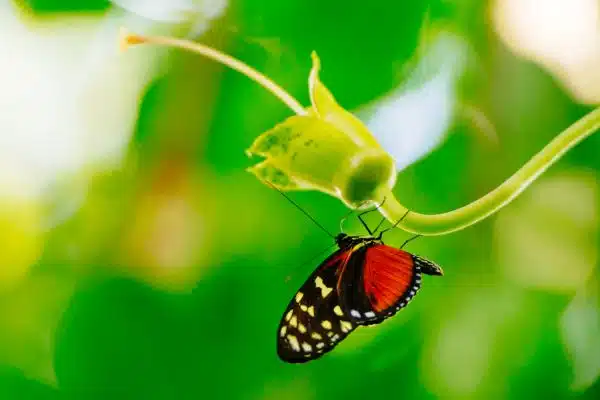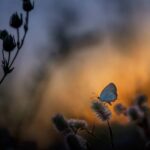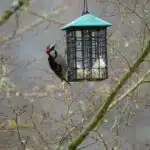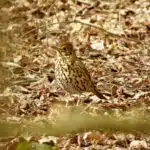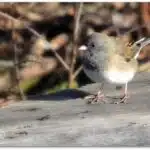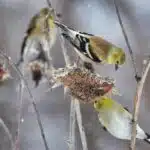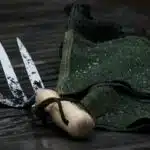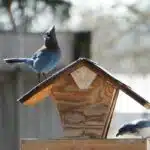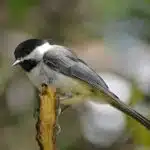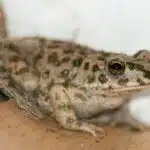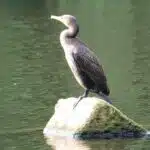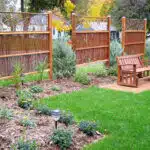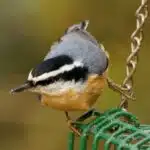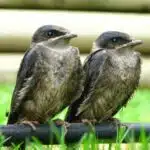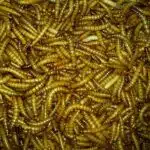Creating a butterfly garden is an exciting way to contribute to the environment and bring beauty to your outdoor space. Butterflies are not only aesthetically pleasing, but they also play a crucial role in pollinating plants, making them essential to the health of ecosystems. As a butterfly gardening expert, I have developed a set of guidelines that will help you create a thriving butterfly garden.
To begin with, it is important to understand the basics of butterfly gardening. This involves selecting appropriate plants that butterflies prefer, creating an environment that attracts them, and providing resources such as shelter and water. By following these steps, you can create a haven for butterflies while also enjoying the benefits of a vibrant and diverse garden. With careful planning and attention to detail, anyone can create a beautiful butterfly garden that will provide enjoyment for years to come.
Understanding The Importance Of Butterfly Gardens
Butterfly migration is an awe-inspiring phenomenon that occurs annually. Millions of butterflies travel thousands of miles to escape harsh weather conditions and find a suitable habitat for breeding and survival. Butterfly gardens provide a safe haven for these beautiful creatures, allowing them to rest, feed, and reproduce before continuing their journey. By creating a butterfly garden in your backyard, you become part of the solution to conserve and protect these delicate insects.
One crucial aspect of designing a successful butterfly garden is choosing the right plant species. Native plants are vital because they provide food and shelter for local butterfly populations. They have adapted to the soil, climate, and environmental conditions in your area, making them more resilient than exotic or non-native species. In contrast, foreign plants may not offer sufficient nutrition or support to native butterflies, leading to population declines over time.
In summary, understanding the importance of butterfly gardens goes beyond aesthetic pleasure or personal enjoyment; it entails protecting an essential part of our ecosystem’s biodiversity. By planting native species that support local butterfly populations, you contribute to their conservation efforts while enjoying the beauty and wonder of these magnificent insects in your backyard. The next step is choosing the right location for your garden – one that maximizes sunlight exposure, minimizes wind exposure, and provides access to water sources – so that your plants can thrive and attract numerous butterflies throughout the seasons.
Choosing The Right Location For Your Garden
While many people may think of butterfly gardens as simply a beautiful addition to their yard, they actually serve an incredibly important purpose. These gardens provide a habitat for butterflies and other pollinators, which in turn helps to support the overall health and diversity of our ecosystem. By creating a butterfly garden, you are not only adding beauty to your surroundings but also doing your part to protect our planet’s biodiversity.
When choosing the right location for your butterfly garden, it is important to consider the amount of sunlight available. Butterflies require plenty of direct sunlight in order to thrive, so be sure to choose a spot that receives at least 6 hours of sun each day. Additionally, you’ll want to consider the soil requirements for different types of plants. Some species prefer well-draining soil while others do better in moist or even boggy conditions.
By taking these factors into account when planning your butterfly garden layout, you can create an environment that is both beautiful and functional. Consider grouping plants with similar sunlight and soil requirements together in order to make maintenance easier and ensure that all of your plants are getting the nutrients they need. With some thoughtful planning and attention to detail, you can create a thriving butterfly garden that will bring joy and beauty to your life while also providing valuable support to our planet’s delicate ecosystem.
Planning Your Garden Layout
When planning a butterfly garden, it is important to first consider the site for the garden as the sun, soil and water availability will play a major role in the success of the garden. Once the site is chosen, the next step is to select plants that will attract and provide food and host plants for butterflies. Be sure to research which plants are native to the area and are best suited for the soil and light conditions. Lastly, consider the availability of plants and the overall design of the garden when selecting plants.
Choosing A Site
When planning your butterfly garden layout, choosing the right site is crucial for ensuring the success and longevity of your garden. Proper site preparation involves selecting an area that receives at least six hours of sunlight per day, as butterflies require ample warmth to thrive. It’s also important to consider the soil quality of your chosen location, as it should be well-draining with plenty of organic matter.
Before beginning any planting, it’s essential to prepare and amend the soil in your selected site. Soil preparation involves removing weeds and debris, tilling the soil to a depth of 8-10 inches, and adding compost or other organic matter to improve soil fertility. The right soil composition ensures that plants receive adequate nutrients, which will promote healthy growth and attract more butterflies.
In addition to proper site selection and soil preparation, it’s also important to consider factors such as water availability and wind exposure when planning your butterfly garden layout. Providing enough water through irrigation or rainfall is essential for keeping plants healthy, while minimizing wind exposure will help prevent damage or loss of fragile butterfly habitat. With these preparations in place, you can create a beautiful and thriving butterfly garden that attracts a diversity of species for years to come.
Plant Selection
When planning your butterfly garden layout, there are several factors to consider, including site selection, soil preparation, and plant selection. Choosing the right plants is crucial for attracting a diversity of butterfly species to your garden. One important consideration when selecting plants is whether to choose native or exotic species. While exotic plants may offer more variety in terms of color and shape, native plants are often better adapted to local growing conditions and can provide essential food sources for local butterfly populations.
In addition to choosing the right type of plants, it’s also important to select species that will specifically attract the butterflies you want to see in your garden. Different species of butterflies have different preferences when it comes to nectar sources and host plants. For example, monarch butterflies rely on milkweed as their primary host plant, while swallowtails prefer citrus trees or other members of the citrus family. By researching which plants are most attractive to specific butterfly species, you can create a garden that is tailored to your interests and goals.
When selecting plants for your butterfly garden, it’s important to consider both nectar sources and host plants. Nectar-producing flowers provide adult butterflies with essential food sources, while host plants offer a place for female butterflies to lay their eggs and support the development of caterpillars. With careful plant selection and planning, you can create a beautiful and thriving butterfly garden that attracts a diversity of species throughout the year.
Selecting Plants For Your Garden
Choosing the right plants is crucial to attract butterflies to your garden. Planting strategies should be considered when selecting the types of flowers and shrubs to include in your butterfly garden. Opt for a variety of colors, shapes, and sizes of plants to create an attractive habitat for different butterfly species. Additionally, ensure that the plants are arranged in a way that allows easy access for butterflies to move around and feed.
Seasonal considerations should also be taken into account when selecting plants for your butterfly garden. It is important to choose a range of flowering plants that bloom at different times throughout the year so that there is always a source of nectar available. For example, early-blooming spring flowers such as crocus and hyacinth can provide food for butterflies emerging from hibernation, while late-blooming fall flowers such as asters and goldenrod can help fuel their migration.
Incorporating host plants in your garden can also be beneficial since they serve as breeding grounds for caterpillars. Some common host plants include milkweed, parsley, and fennel. Providing these specific host plants can entice butterflies to not only visit but stay in your garden throughout their entire life cycle.
- Including both annuals and perennials can provide long-term interest in your butterfly garden
- Consider planting native species as they are often more appealing to local butterfly populations
- Incorporating various heights of plants provides vertical space catering to different butterfly species
Transition: Now that you have selected the perfect combination of plants for your butterfly garden let’s dive into how you can cater specifically to different butterfly species.
Catering To Different Butterfly Species
For a successful butterfly garden, it is vital to cater to the different species that inhabit your area. One example could be the monarch butterfly. Monarchs require milkweed as their host plant for breeding and laying eggs, and nectar plants for food. Without these specific plants, monarchs will not thrive in your garden.
Host plant selection is crucial for attracting and supporting butterflies in your garden. Different species of butterflies have specific host plants they need to lay their eggs on and provide food for their larvae. For instance, swallowtail butterflies use members of the parsley family as host plants, while Gulf Fritillary butterflies rely on passionflower vines. By including a variety of host plants in your butterfly garden, you can attract various butterfly species and ensure they have what they need to reproduce.
Nectar plant selection is equally important when catering to different butterfly species. Butterflies feed on nectar from flowers, so having a diverse range of flowers with varying bloom times ensures a steady supply of food throughout the growing season. It also provides an opportunity for different butterfly species with varying preferences to visit your garden regularly.
With proper host and nectar plant selection, you can create a haven for different butterfly species in your garden. However, catering to these insects’ needs does not stop there; creating a suitable habitat for butterflies is equally important. In the next section, we will discuss how to create a conducive environment that will support the life cycle of various butterfly species in your garden.
Creating A Suitable Habitat For Butterflies
Creating a butterfly garden is not just about planting colorful flowers, but it also requires creating a suitable habitat for butterflies. A well-designed butterfly garden provides an environment where butterflies can thrive and breed. Here are some tips for creating an ideal habitat for butterflies.
Firstly, make sure to choose the right location for your butterfly garden. Butterflies need sunshine to warm themselves up, so the garden should be in a spot that gets at least six hours of direct sunlight daily. Also, make sure that the garden is sheltered from strong winds as it can damage their fragile wings.
Secondly, maintain the cleanliness of your butterfly garden by regularly removing dead leaves and other debris that may accumulate on the ground. This will prevent diseases from spreading and will also keep the area clean and tidy.
Lastly, providing water sources such as shallow dishes filled with water or moist sand is essential in creating an ideal habitat for butterflies. These water sources not only provide moisture to thirsty butterflies but can also attract other beneficial insects such as bees and wasps.
Bullet Points:
- Ensure the garden gets at least six hours of direct sunlight daily
- Protect the garden from strong winds
- Regularly remove dead leaves and debris
- Provide water sources such as shallow dishes filled with water or moist sand
- Attract other beneficial insects such as bees and wasps
Butterfly gardens have numerous benefits such as attracting pollinators to the area, beautifying outdoor spaces, and providing educational opportunities for children. To enjoy these benefits fully, proper maintenance is necessary. Butterfly gardens require regular watering and fertilization to ensure healthy growth of plants while removing any dead plant material or pests that could harm them.
In conclusion, designing a suitable habitat for butterflies involves choosing the right location, maintaining cleanliness, and providing adequate resources such as water sources. By doing this, you create an environment where butterflies can thrive while enjoying all of the benefits that come with having a butterfly garden. In the next section, we will discuss providing food sources for caterpillars, which is crucial in creating a sustainable butterfly garden.
Providing Food Sources For Caterpillars
Creating a Suitable Habitat for Butterflies is the first step towards building a butterfly garden. In this section, we discussed the importance of planting native species, providing shelter, and avoiding the use of pesticides. Now, let’s move onto the next crucial aspect of butterfly gardening – providing food sources for caterpillars.
Host plant selection is a critical factor to consider when planning your butterfly garden. Different species of butterflies have specific host plants that they rely on for laying their eggs and nurturing their caterpillars. Some common examples include milkweed for monarch butterflies and parsley for black swallowtail butterflies. It’s essential to research which host plants are suitable for the species you wish to attract and incorporate them into your garden design.
Raising caterpillars can be an incredibly rewarding experience, and it’s an excellent way to observe the full life cycle of these fascinating creatures. By selecting host plants that support a variety of butterfly species in your area, you can provide a safe haven for caterpillars to feed and grow into adult butterflies. As they mature, be sure to keep an eye out for any signs of predation or disease and take appropriate measures to protect them. With careful attention and dedication, you’ll soon see your garden buzzing with life as countless butterflies take flight.
Incorporating water features can be an effective way to attract more diverse species of butterflies to your garden while adding visual interest. Shallow bird baths or small ponds can provide valuable drinking sources for adult butterflies while also serving as a breeding ground for some species. Just be sure to maintain clean water levels regularly to prevent mosquito breeding grounds from forming. With all these elements combined – suitable habitat, food sources, and water features – you’ll have created an inviting environment that will attract not only butterflies but other pollinators like bees and hummingbirds as well.
Incorporating Water Features
Water Feature Options
Water features are an excellent addition to any butterfly garden. They provide a source of hydration for butterflies and other wildlife, as well as add aesthetic value to the space. When choosing a water feature for your garden, there are several options to consider. One option is a small pond or pool, which can be home to fish and aquatic plants in addition to serving as a water source for butterflies. Another option is a bird bath or fountain, which can be filled with rocks or stones to allow butterflies to perch while drinking.
Benefits of Water Features in Butterfly Gardens
The benefits of adding water features to your butterfly garden are numerous. Not only do they provide a source of hydration for butterflies and other wildlife, but they also attract beneficial insects such as dragonflies and damselflies that feed on mosquitoes and other pests. Additionally, the sound of running water can create a tranquil environment that encourages relaxation and reduces stress.
- Nestled bullet point list:
- Watching butterflies drink from the water feature can evoke feelings of wonder and awe.
- Observing nature up close can bring a sense of peace and connection with the natural world.
- The sound of flowing water can create a relaxing atmosphere that promotes mindfulness and meditation.
- Being present in the moment and focusing on one’s breath can improve mental health.
Adding Shelter for Butterflies
Just as humans need shelter from harsh weather conditions, butterflies require shelter from strong winds, heavy rain, and extreme temperatures. Providing shelter in your butterfly garden can be achieved through planting trees or shrubs that offer protection from the elements. In addition, providing areas with leaf litter or rock piles allows butterflies to rest during migration periods or when seeking refuge from predators.
With these considerations in mind, you can create an inviting space where butterflies feel welcome and safe enough to call home. Adding elements such as water features and shelter not only benefits these delicate creatures but also provides a peaceful retreat for humans seeking to connect with nature.
Adding Shelter For Butterflies
Creating cover for butterflies is important for providing shelter from predators and the elements. Areas of dense vegetation or structures such as butterfly houses can be effective for this purpose. Providing water for butterflies is essential for hydration and for puddling – a behavior in which butterflies extract minerals and salts from moist soil. Sources of water can include shallow dishes, birdbaths, or a shallow stream. Planting nectar plants is essential for providing a food source for butterflies. Consider native and non-invasive species of plant that will bloom throughout the growing season. Choosing plants with a variety of flower shapes and colors can also attract a greater diversity of butterfly species.
Creating Cover
Creating cover is a vital step in adding shelter for butterflies. To ensure their survival, it’s crucial to provide them with natural materials that can serve as protection against the elements and predators. Using plants such as ferns, shrubs, and trees will offer shade and shelter for the butterflies. These plants also provide food sources for the caterpillars to feed on. Additionally, garden sculptures can be incorporated into the butterfly garden to add an aesthetic appeal while serving as hiding spots for the butterflies.
Using natural materials is essential when creating cover for the butterfly garden. Rocks, logs, and leaf litter can serve as hiding places for butterflies during harsh weather conditions or from predators. These materials mimic natural habitats where butterflies are found in the wild. It’s important to avoid using pesticides or chemicals that may harm the delicate ecosystem of the butterfly garden.
Garden sculptures can also be used to create cover in a butterfly garden. These sculptures can be made from natural materials such as wood or stone and placed strategically throughout the garden to provide hiding spots for butterflies. They not only serve a functional purpose but also add a decorative element to the garden. Incorporating these elements into your butterfly garden will not only attract more butterflies but also provide them with a safe haven to thrive in their natural habitat.
Providing Water
To ensure the survival of butterflies in a garden, there are several factors to consider. One of these essential factors is providing water. Butterflies need access to clean water for hydration and reproduction purposes. As a butterfly gardening expert, I highly recommend creating DIY water features, as they are easy to install and maintain.
DIY water features can be made from various materials such as clay pots, birdbaths, or even natural rock formations. These features can provide butterflies with a reliable source of water that is free from contaminants. It’s important to keep the water fresh by regularly cleaning and refilling it. Additionally, adding rocks or pebbles into the water feature can create shallow areas where butterflies can safely land and drink.
The importance of hydration for butterflies cannot be overstated. Without access to clean water sources, they become dehydrated, making them more susceptible to predators or disease. Providing water not only helps butterflies survive but also encourages them to stay longer in your garden as they search for food sources and shelter. By incorporating DIY water features into your butterfly garden, you’re creating a welcoming environment that supports their growth and overall wellbeing.
Planting Nectar Plants
As a butterfly gardening expert, adding shelter for butterflies is crucial in ensuring their survival. Providing shelter can protect them from extreme weather conditions and predators while also offering a safe place to rest and lay eggs. One way to create shelter for butterflies is by planting nectar plants in your garden. These plants not only provide a food source but also serve as a resting spot for butterflies.
When planting nectar plants, it’s essential to consider the right planting techniques to encourage healthy growth. It’s recommended to plant them in clusters rather than scattering them throughout the garden, as this creates a more attractive feeding area for butterflies. Additionally, selecting plants with different nectar bloom cycles ensures that there is always a food source available for butterflies throughout the season.
Nectar plants come in various shapes and sizes, making it easy to incorporate them into any garden design. Some popular options include milkweed, coneflowers, and butterfly bushes. By planting these types of flowers, you’re not only providing shelter for butterflies but also creating an aesthetically pleasing landscape that attracts other pollinators such as bees and hummingbirds.
Avoiding Harmful Pesticides And Chemicals
After providing shelter for butterflies in your garden, the next step is to ensure that the garden remains healthy without harming the butterflies or their habitat. One of the main concerns is to avoid using harmful pesticides and chemicals. These substances can kill not only pests but also beneficial insects such as bees and butterflies. Fortunately, there are alternatives to conventional pesticides that can help keep your garden healthy and thriving.
One option is to use natural pest control methods such as companion planting, which involves planting certain crops together to repel pests. For example, marigolds are known to deter aphids, while garlic repels Japanese beetles. Another effective method is to introduce beneficial insects into your garden, such as ladybugs and praying mantises, which help control unwanted pests.
In addition to these methods, there are a variety of organic pest control products available on the market that are safe for both butterflies and humans. These products use natural ingredients such as neem oil or pyrethrum derived from chrysanthemums. By choosing natural pest control methods over harmful chemicals, you can maintain a healthy butterfly garden without putting their lives at risk. In the next section, we will discuss how to monitor and maintain your butterfly garden for optimal success.
Monitoring And Maintaining Your Garden
One of the most common objections to creating a butterfly garden is the belief that it will require too much maintenance. However, with proper planning and commitment, maintaining a butterfly garden can be simple and rewarding. Creating a schedule for routine tasks such as weeding, watering, and deadheading spent flowers can help keep your garden healthy and thriving.
Identifying potential issues before they become major problems is also critical to maintaining your butterfly garden. Keep an eye out for signs of disease or pest infestation, including yellowing leaves or evidence of chewing insects. Promptly addressing these issues can prevent them from spreading and causing irreparable damage to your plants.
Regular monitoring of your butterfly garden’s health and growth not only helps ensure its success but also allows you to enjoy the beauty of its inhabitants. With just a little time each week, you can cultivate a thriving ecosystem that supports not only butterflies but also other beneficial insects such as bees and ladybugs. In the next section, we’ll explore some strategies for attracting other pollinators to your garden.
Attracting Other Pollinators To Your Garden
Creating habitats for other pollinators in your butterfly garden is not only beneficial for the environment but also helps in maintaining a healthy ecosystem. To attract a variety of pollinators such as bees, moths, and hummingbirds, it’s essential to incorporate different planting techniques along with providing a comfortable habitat. You can add native plants and shrubs that bloom throughout the year to offer a continuous source of nectar and pollen.
Planting techniques play a crucial role in attracting other pollinators to your garden. It’s best to create designated areas of plant clusters with similar colors or shapes as this helps in attracting specific species. Adding layers of vegetation such as ground covers, herbs, and taller plants also provides shelter and nesting sites for these creatures. By incorporating these planting techniques, you can create an optimal habitat for other pollinators while enhancing the beauty of your butterfly garden.
In conclusion, creating habitats and using appropriate planting techniques can help attract various species of pollinators to your butterfly garden. By doing so, you are not only helping the environment but also contributing to preserving the natural ecosystem around you. In the subsequent section, we will discuss how incorporating educational elements for children can help instill an appreciation for nature from an early age.
Incorporating Educational Elements For Children
Picture this: a group of children wandering through a lush garden, their eyes wide with wonder as they spot colorful butterflies fluttering around them. As a butterfly gardening expert, I believe that incorporating educational elements for children can enhance the experience of creating a butterfly garden. Not only does it make the process more fun and engaging, but it also teaches children about the importance of conservation and biodiversity.
One way to incorporate educational elements is by introducing butterfly garden crafts. These hands-on activities allow children to get creative while learning about the different stages of a butterfly’s life cycle. For example, they could make paper plate butterflies or create their own chrysalis out of recycled materials. By doing so, they will gain a deeper appreciation for these fascinating creatures and understand how to protect their habitats.
Another idea is to set up a butterfly garden scavenger hunt. This activity encourages children to observe and identify different species of butterflies in the garden while learning about their behaviors and characteristics. You could provide them with a list of clues or questions related to butterflies, such as “find a butterfly with orange wings” or “what do butterflies eat?” This interactive game not only makes learning fun but also reinforces important concepts about conservation and ecological awareness.
Incorporating educational elements into your butterfly garden project can be an excellent way to engage children in learning while having fun. By making crafts and playing games like scavenger hunts, you can encourage curiosity and exploration all while promoting environmental stewardship. In the next section, we will discuss how to incorporate butterfly-friendly garden decor into your project for added beauty and functionality.
Incorporating Butterfly-Friendly Garden Decor
Butterfly garden decor is a key aspect of creating a welcoming environment for these beautiful creatures. There are many DIY garden projects that can be done to incorporate butterfly-friendly decor into the garden. For instance, one could create a butterfly feeder or a butterfly house.
A butterfly feeder is an excellent way to attract butterflies to the garden. It can be made using recycled materials such as plastic bottles or wooden pallets. The feeder should be filled with sugar water or fruit juice, which will provide the necessary nutrients for the butterflies to thrive. Additionally, a butterfly house can be constructed using wooden pieces and mesh wire. These houses provide shelter for butterflies during harsh weather conditions.
Another great way to incorporate butterfly garden decor is by planting flowers and plants that are attractive to butterflies. Some popular options include milkweed, marigold, and lavender. These plants not only add color and beauty to the garden but also serve as food sources for adult butterflies and caterpillars.
- Here are five DIY project ideas for incorporating butterfly-friendly decor into your garden:
- Create a mosaic stepping stone with colorful glass tiles.
- Hang colorful wind chimes made from recycled materials.
- Build a vertical pallet planter filled with butterfly-attracting flowers.
- Make a whimsical insect hotel using natural materials like bamboo and twigs.
- Paint rocks with brightly colored designs and place them throughout the garden.
By incorporating these ideas into your butterfly garden, you can create an inviting oasis for butterflies while adding unique character to your outdoor space. With patience and dedication, you can enjoy the benefits of a thriving butterfly garden in no time!
Enjoying The Benefits Of A Thriving Butterfly Garden
Butterfly gardens are not only beautiful, but they also serve a purpose in preserving butterfly populations. According to the North American Butterfly Association, over 90% of butterfly habitats have disappeared due to human activities such as urbanization and pesticide use. By creating a butterfly garden, you are providing a safe haven for butterflies and contributing to their survival.
Maximizing blooms is key to attracting butterflies to your garden. Butterflies are attracted to bright colors such as red, orange, and yellow, so planting flowers such as zinnias, marigolds, and sunflowers can increase their presence in your garden. It’s important to have a variety of flowers that bloom at different times throughout the season so that there is always a food source for butterflies.
When it comes to butterfly watching etiquette, it’s important to remember that these delicate creatures should be observed from a distance. Avoid touching or chasing them as this can cause stress and harm. Additionally, avoid using pesticides in your garden as they can be harmful not only to butterflies but also other beneficial insects such as bees.
By creating a thriving butterfly garden with an abundance of blooms and practicing proper butterfly watching etiquette, you can enjoy the beauty of these creatures while also contributing to their preservation. As butterfly gardening experts recommend, take time to observe these magnificent creatures in their natural habitat without disturbing them.
Conclusion
Butterfly gardens are not only beautiful but also serve as vital habitats for these delicate creatures. Choosing the right location and plants, catering to different species, and incorporating educational elements are all crucial steps to creating a thriving butterfly garden.
When selecting plants for your garden, it’s important to choose a variety of host plants for caterpillars and nectar-rich flowers for adult butterflies. Consider incorporating milkweed, parsley, and dill as host plants and asters, coneflowers, and zinnias as nectar sources. Additionally, adding a water source such as a shallow dish or birdbath can attract other pollinators like bees and birds.
Incorporating butterfly-friendly garden decor such as colorful flags or butterfly houses can add an additional element of beauty while serving practical purposes. A butterfly house provides shelter for butterflies during rain or wind while also adding an aesthetically pleasing element to your garden. Remember that creating a butterfly garden is not only beneficial for the environment but also serves as a peaceful retreat where you can observe nature’s beauty in action.
In conclusion, creating a successful butterfly garden requires careful planning and attention to detail. Similar to how butterflies transform from caterpillars into vibrant winged creatures, your garden will transform into a haven for these majestic insects with the right care and dedication. So spread your wings and let your imagination take flight as you create your very own butterfly sanctuary!
Image Credits
- “Butterfly at the gardens” by Paladin27 (featured)

